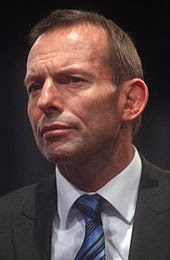
 South Africa is the 25th-largest country in th world by land area and it is located at the southernmost region of Africa with a long coastline that stretches more than 2,500 km (1,553 mi) and along two oceans (the South Atlantic and the Indian). The interior of South Africa consists of a vast in most places, almost flat, plateau with an altitude of between 1,000 m( 3,300 ft) and 2,100 m (6,900 ft), highest in the east, sloping gently downwards towards the west, south and north. Source: www.en.wikipedia.org
South Africa is the 25th-largest country in th world by land area and it is located at the southernmost region of Africa with a long coastline that stretches more than 2,500 km (1,553 mi) and along two oceans (the South Atlantic and the Indian). The interior of South Africa consists of a vast in most places, almost flat, plateau with an altitude of between 1,000 m( 3,300 ft) and 2,100 m (6,900 ft), highest in the east, sloping gently downwards towards the west, south and north. Source: www.en.wikipedia.org
The official name of this country is the Republic of South Africa.
Biodiversity of South Africa:
King Protea, national flower.
Finbos, Cape floristic region.
Blue Crane, national bird.
Flowers in the West National Park
Population: South Africa is the world's 24th-most populous nation with close to 53 million people. South Africa is a multiethnic society encompassing a wide variety of cultures, languages and religions. It is pluralistic makeup is reflected in the constitution's recognition of 11 oficial languages, which is among the highest number of any country in the world.
Language:
It is surprising that South Africa has eleven official languages: Afrikaans, English, Ndebele, Northern Sotho, Sotho, Swasi, Tswana, Tsonga, Venda, Xhosa and Zulu. Fewer than two percent of South Aficans speak a first language other than an official one. Most South Africans can speak more than one language. Dutch and English were the first official languages of South Africa from 1910 to 1925.
This is a Trilingual government building sign in Afrikaan, English and Xhosa:
This is a map which shows the dominan home languages in South Africa, based on ward-level data from 2011 census. In this context a languge is dominant if it more than 50% of the population in a ward speak it at home, or more than 33% speak it and no other language is spoken by more than 25%.
Afrikaans
English
isiNdebele
isiXhosa
isiZulu
Sesotho sa Leboa
Sesotho
Setswana
siSwati
Tshivenda
Xitsonga
No language dominant
source: en.wikipedia.org
Government:
The government in South Africa is a Constitutional Parliamentary Republic. President is Jacob Zuma; Deputy President is Kgalema Motlanthe; NCOP chairman is Mningwa J. Mahlangu; Speaker of the National Assembly is Max Sisulu and Chief Justice is Mogoeng Mogoeng.
Education:
South Africa has a 3 tier system of education starting with primary school, followed by high school and tertiary education in the form of (academic) universities and universities of technology. Learners have twelve years of forman schooling, from grade 1 to 12. Grade R is a pre-primary foundation year. Primary schools span the first seven years of schooling. High school education spans a further five years. The Senior Certificate examination takes place at the end of grade 12 and is necessary for tertiary studies at a South African University. Source: www.en.wikipedia.org.
Many of South Africa Universities are world-class academic institutions at the cutting edge of research in various spheres. Together, the country's 23 public higher education institutions offer a range of study and research options for both local and international students.
Subsidied by the state, South Africa's universities are governed in terms of the Higher Education Act. They remain autonomous, however, reporting to their own councils rather than to the government.
Famous people:
 Nelson Mandela (1918-2013)World Leader. He was a South African revolutionary and politician who radically changed the conditions of the Apartheid state of South Africa for the better by addressing institutionalized racism and inequality. He served 27 years in prison and upon his release in 1994, he became South Africa's first black chief executive, an office he served for five years. He received the Nobel Peace Prize in 1993 while he was still in prison and he has been portrayed by Sidney Poitier. Danny Glover, Idris Elba, Terrence Howard, and Morgan Freeman in various folks about his life.
Nelson Mandela (1918-2013)World Leader. He was a South African revolutionary and politician who radically changed the conditions of the Apartheid state of South Africa for the better by addressing institutionalized racism and inequality. He served 27 years in prison and upon his release in 1994, he became South Africa's first black chief executive, an office he served for five years. He received the Nobel Peace Prize in 1993 while he was still in prison and he has been portrayed by Sidney Poitier. Danny Glover, Idris Elba, Terrence Howard, and Morgan Freeman in various folks about his life.
Dave Matthews, singer and guitar player for the Dave Mathews band who won a grammy award for the song "So much to say, he has written singles like "Where are you going?" and "some Devil".





.JPG)

















.jpg)
.jpg)

_svg.png)









